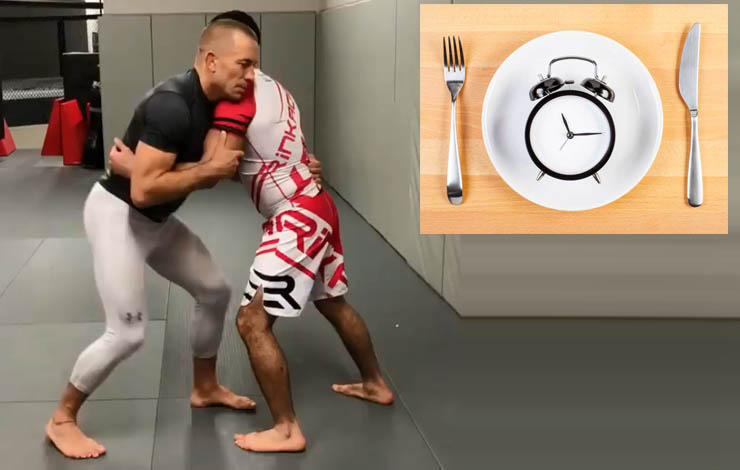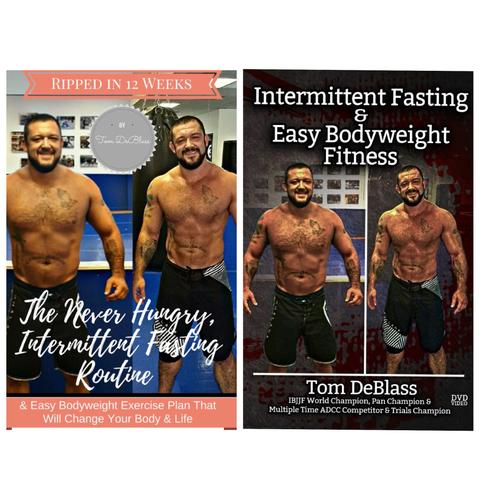Guest post by Evolve MMA, Asia’s premier championship brand for martial arts. It has the most number of World Champions on the planet. Named as the #1 ranked martial arts organization in Asia by CNN, Yahoo! Sports, FOX Sports, Evolve MMA is the best Singapore BJJ gym.
What we eat is important. A few or no refined carbohydrates work to maintain or restore your health. Nutrient-rich diets that include vegetables, fruit, lean meat, and white meat all but guarantee a healthy body.
There’s another aspect to a diet that affects the outcome of your fitness journey: Timing.
The way we time and space our meals affects how our bodies metabolize stored fat. This is where approaches like intermittent fasting come in.
How Intermittent Fasting Works
Intermittent fasting is a way of timing and spacing what you eat. The end goal is to drive the body to burn calories that are already in storage. Here’s the concept in a nutshell:
If the body goes for hours without food or snacks, it will turn to its stash of calories stored in fat to keep the body going. In contrast, eating every now and then supplies the body with a steady supply of blood glucose. Now, since the human body loves efficiency, it will burn the glucose in the bloodstream as opposed to retrieving the calories in storage.
This means that the calories that sit in storage will accumulate, resulting in weight and fat gain, among other undesirable things. Intermittent fasting limits your meals to several hours in a day, leaving your body with no choice but to burn fat reserves.
What Intermittent Fasting Looks Like
It bears mentioning that people are staying awake for longer stretches of time. The longer we stay awake, the more likely we are to snack late into the night.
In the days before streaming services, 24-hour channels, and electricity, most people went to bed early. Going to sleep at 10 p.m. and waking up at 6 a.m. would naturally force the body to source its energy from storage instead of a midnight snack. In those days, “intermittent fasting” was just how pretty much everyone lived their lives.
Here’s how intermittent fasting looks like in today’s world: Carve out several hours of the day where you can eat. Then carve out another tranche of time where you don’t eat at all. There are several popular variations of intermittent fasting.
Intermittent Fasting: Different Types
The difference in various intermittent fasting methods comes down to how long you should fast and the window of time that you make available for eating. Here is a list of the most popular methods:
- Alternate day fasting: Where a person fasts all day, on alternate days. On their off-days, the person can eat as they normally do
- Eat-stop-eat: This method allows you to choose two non-consecutive fast days in a week. You fast for 24 hours on your chosen days and eat as normal for the rest of the days
- The 5:2 method: For five days out of seven, eat as normal. The remaining two days require a partial fast, with caloric intake limited to a quarter of your normal intake
- The 16/8 method: In this variation, you limit food intake to eight hours a day. You fast for the remaining sixteen hours
Of the four methods we describe here, the 16/8 variation is the easiest and most natural way to go. Going to bed early helps, making it easier to keep away from snacking or a second dinner.
The Effectiveness Of Intermittent Fasting
It’s worth repeating that intermittent fasting works best when you choose a healthy diet to complement the fast. This means minimizing junk food and being deliberate about adding the following foods to your diet:
- Fruits and vegetables
- Lean red meat, in moderation
- White meat like fish, chicken, and pork
- Complex carbohydrates, which take longer to break down
Making these changes to your diet improves the outcome of intermittent fasting. A healthy diet and a 16/8 intermittent fast can deliver impressive results. As an example, this type of fast can allow you to lose fat (and weight) without losing muscle. The knock-on effect of the weight loss is a decrease in overall inflammation.
The 16/8 model is ideal because you can schedule about half of your fasting period around sleep. This will likely keep you from overeating when you get past the fasting phase. Minimal restrictions during the eating phase make it easier to stick with the diet. In contrast, people who fast for 24 hours are more likely to quit their diet regimen.
How Intermittent Fasting Compares To Other Diets
So, what do you gain from this (sometimes) drastic lifestyle change? Does intermittent fasting get you towards your fitness goals any faster? Does it have an edge over other methods of dieting, or is it just the latest fad?
A 2011 Chicago study compared the efficacy of alternate-day intermittent fasting to a diet that reduces caloric intake. The result of the study found that the rate of weight loss was comparable in both diets. The study also found that subjects that reduced their calorie intake were more likely to stick with their diet. Team alternate-day fasting was more likely to quit mid-way. For this reason, we recommend the 16/8 method.
Intermittent fasting delivers similar results to other diets that you stick with to the end. However, there is one advantage of the 16/8 variation of intermittent fasting: It takes you back to how life used to be.
The 16/8 method is natural in that you only need to eat over the span of several hours. You can eat throughout your workday and close with dinner. A good night’s sleep takes up half of the fast, which dispenses with cravings. Minimal dietary restrictions make this an easy lifestyle to adopt in the long term.
Benefits Of Intermittent Fasting
For starters, intermittent fasting trains the body to burn fat instead of blood glucose, which reduces insulin resistance. The diet is also as effective as any other. Most importantly, the lack of restrictions (within reason) makes the 16/8 model easy to follow. It is possible to make this model a lifestyle, which comes with health benefits like improved memory and cardiac function.
Even better, fasting pushes the body to do waste removal and other housekeeping activities that usually happen during sleep. The body gets to regenerate old, worn cells for longer periods.
Intermittent Fasting Is Not For Everyone
A doctor should confirm that you’re healthy enough to pursue intermittent fasting. Some diabetics may react badly to this type of diet. Other health conditions that are a bad fit for intermittent fasting are:
- A history of one or more eating disorders
- Heart disease that requires certain types of medication
- High blood pressure that also requires certain types of medication
Intermittent fasting works best when you switch to healthy foods in the bargain. This means drastically reducing your junk food intake. Overlooking this aspect of the diet could lead to weight gain. If you have limited access to healthy foods, it might be better if you tried to reduce your calorie intake instead.
Lifestyle And Diet
Take a closer look at your lifestyle to see if intermittent fasting is a good fit. A well-thought-out diet will always work if you follow through. Enlist the help of a trained dietician, who will craft a diet that suits your specific needs. They will do their best to create a diet plan that works with your schedule, personality, and health requirements.
Talking with a trained nutritionist/dietician will let you know if intermittent fasting is something you should get into.
If you’re ready to trade in your “Dad Bod” or you’ve always wondered if there was an easy-to-follow nutritional and exercise plan that will get you in the best shape in your life, without endless hours in the gym or trying to survive on lettuce and water, then look no more. BJJ Fanatics has brought one of the most respected BJJ martial artists, teachers and school owners, Tom DeBlass in to share the simple to follow secrets that have him in the best shape of his life at age 35! Check out “Ripped in 12 Weeks” available here where Tom will share all of his nutritional and fitness secrets in an easy to follow format, complete with guidebooks and recipes.


















